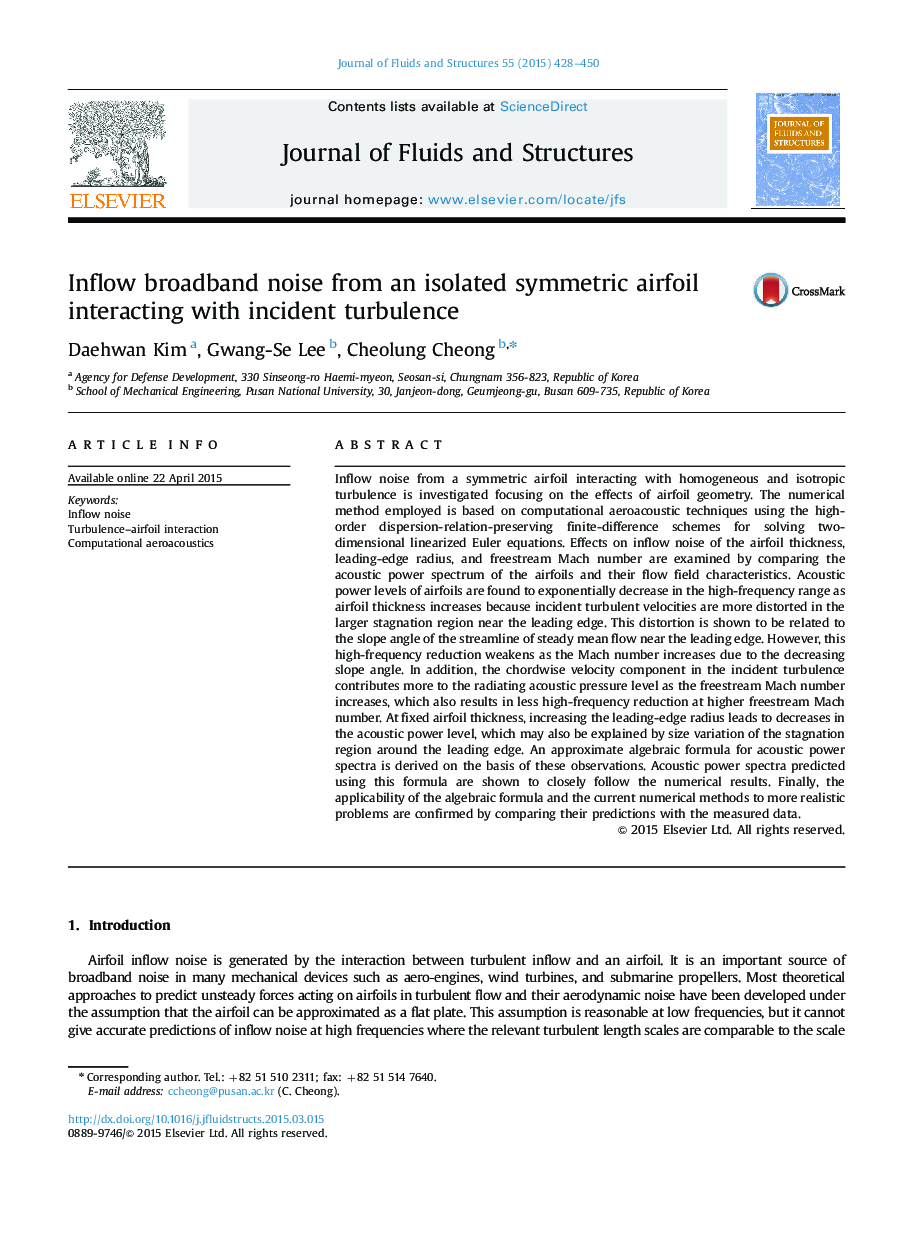| کد مقاله | کد نشریه | سال انتشار | مقاله انگلیسی | نسخه تمام متن |
|---|---|---|---|---|
| 796880 | 1466592 | 2015 | 23 صفحه PDF | دانلود رایگان |

• Inflow turbulence noise of an airfoil with finite thicknesses is investigated.
• The thicker airfoil reduces acoustic power levels in the high-frequency range.
• High-frequency reduction in acoustic power spectra weaken as Mach number increases.
• Greater leading-edge radius reduces noise radiation by increasing stagnation region.
• An algebraic formula is derived to predict the acoustic power spectra of real airfoils.
Inflow noise from a symmetric airfoil interacting with homogeneous and isotropic turbulence is investigated focusing on the effects of airfoil geometry. The numerical method employed is based on computational aeroacoustic techniques using the high-order dispersion-relation-preserving finite-difference schemes for solving two-dimensional linearized Euler equations. Effects on inflow noise of the airfoil thickness, leading-edge radius, and freestream Mach number are examined by comparing the acoustic power spectrum of the airfoils and their flow field characteristics. Acoustic power levels of airfoils are found to exponentially decrease in the high-frequency range as airfoil thickness increases because incident turbulent velocities are more distorted in the larger stagnation region near the leading edge. This distortion is shown to be related to the slope angle of the streamline of steady mean flow near the leading edge. However, this high-frequency reduction weakens as the Mach number increases due to the decreasing slope angle. In addition, the chordwise velocity component in the incident turbulence contributes more to the radiating acoustic pressure level as the freestream Mach number increases, which also results in less high-frequency reduction at higher freestream Mach number. At fixed airfoil thickness, increasing the leading-edge radius leads to decreases in the acoustic power level, which may also be explained by size variation of the stagnation region around the leading edge. An approximate algebraic formula for acoustic power spectra is derived on the basis of these observations. Acoustic power spectra predicted using this formula are shown to closely follow the numerical results. Finally, the applicability of the algebraic formula and the current numerical methods to more realistic problems are confirmed by comparing their predictions with the measured data.
Journal: Journal of Fluids and Structures - Volume 55, May 2015, Pages 428–450